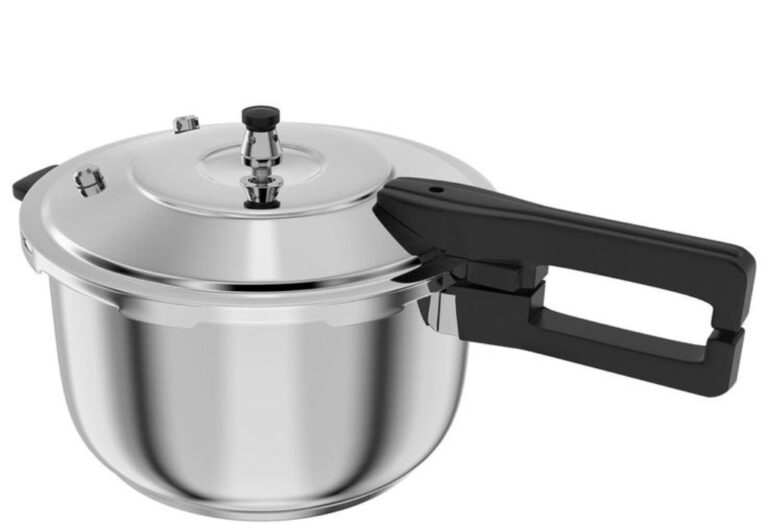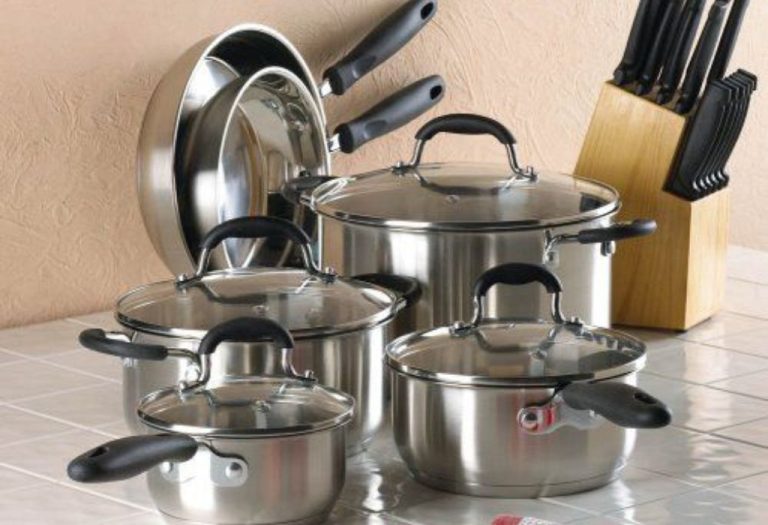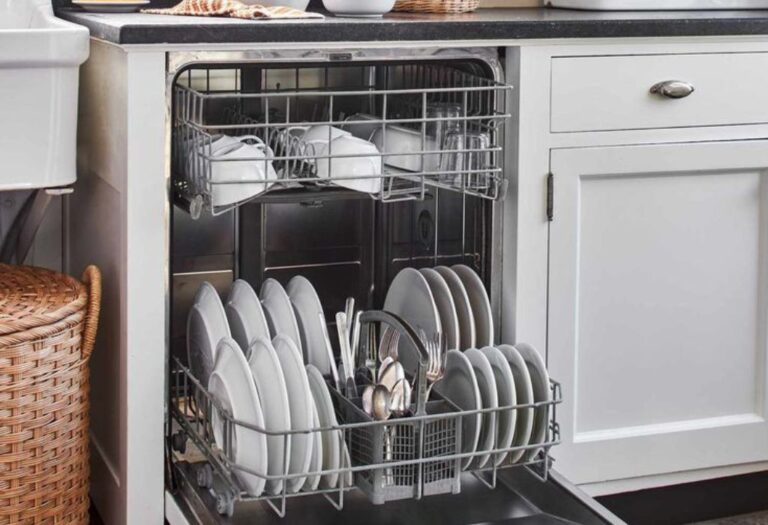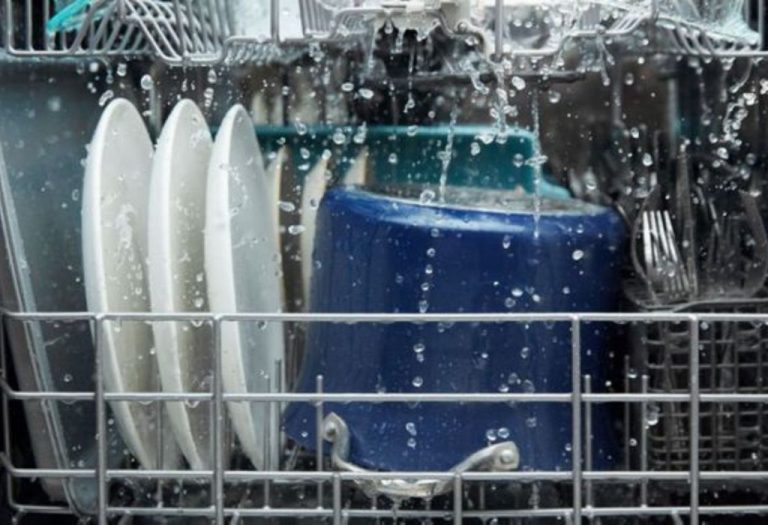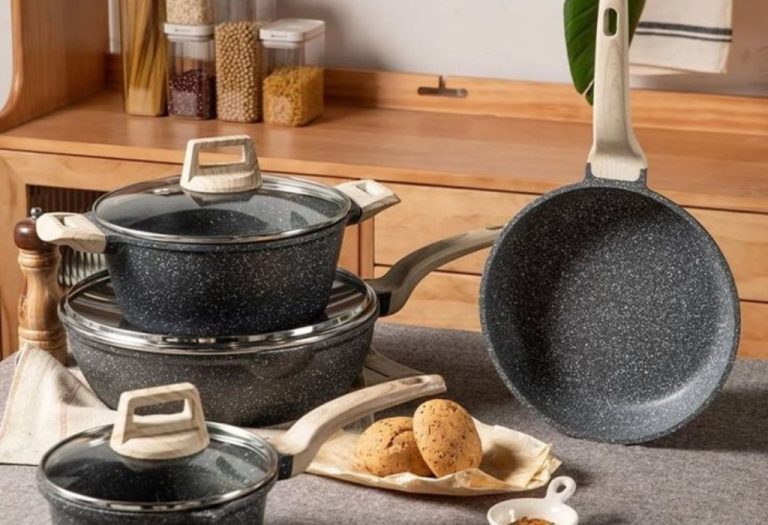Imagine cooking breakfast and watching an omelet glide effortlessly across the pan without oil or butter. No stubborn residue, no smoky fumes, just a smooth surface promising healthier meals.
For years, traditional nonstick pans coated with PTFE have raised concerns about safety at high temperatures. Flaking surfaces and potential chemical exposure made many home cooks wonder if a better alternative existed.
This curiosity gave rise to ceramic coating cookware, a kitchen innovation marketed as safer and eco-friendly. But what is ceramic coating cookware and why has it gained so much attention in recent years?
The cookware industry itself reflects this growing shift. The global cookware market was valued at over $32.75 billion in 2024 and continues to expand as consumers demand non-toxic, sustainable products (source).
Health awareness plays a major role too. Studies show that more than 70 percent of households in the United States now prefer nonstick cookware for daily cooking, with ceramic coatings becoming an increasingly popular choice (source).
The appeal goes beyond convenience. Ceramic coating cookware promises nonstick performance, higher heat resistance, and a cooking surface free of PFOA and PFAS chemicals. It also speaks to a new generation of eco-conscious buyers who value products that align with sustainability.
What Is Ceramic Coating Cookware?
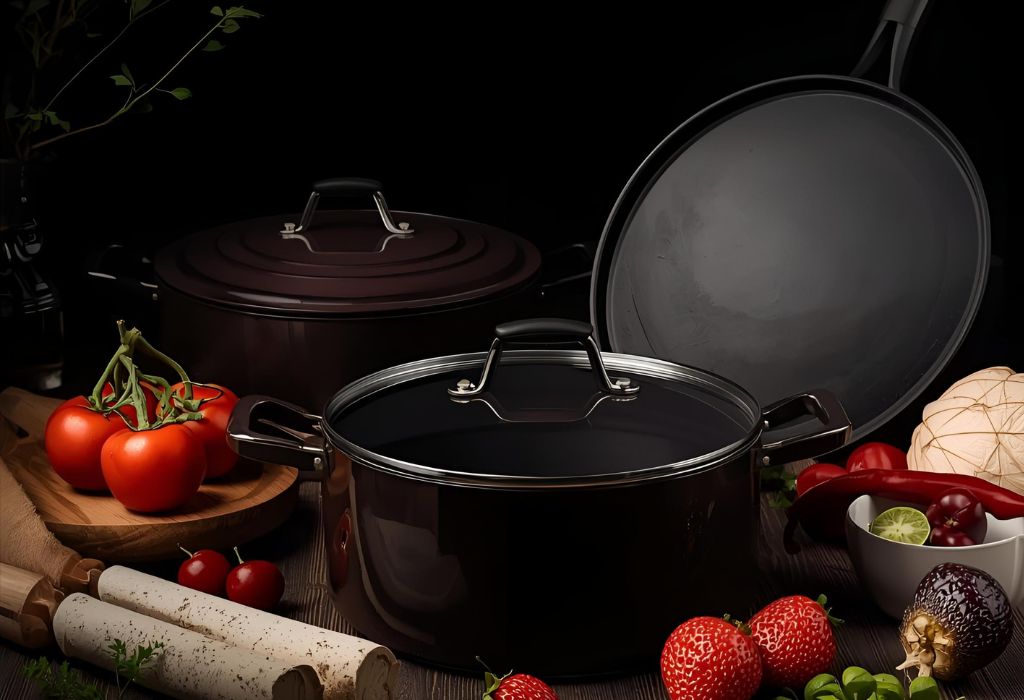
Ceramic coating cookware refers to pots and pans built with a metal core, often aluminum or stainless steel, that is sprayed with a Sol-gel ceramic finish. This coating creates a slick nonstick surface that resists sticking, reduces the need for oils, and avoids the chemicals found in traditional PTFE cookware.
Unlike pure ceramic cookware, which is made entirely from clay and glaze, ceramic-coated pieces are hybrids. The strong metal base gives them stability and fast heat conduction, while the ceramic layer provides safety and a smooth cooking experience.
The coating is typically free from PFAS, PFOA, and PTFE, which makes it appealing to health-conscious consumers. It is also marketed as an eco-friendly alternative because the curing process involves fewer pollutants compared to synthetic nonstick coatings.
While the name can be confusing, ceramic coating cookware does not mean the pan itself is fully ceramic. Instead, it represents a balance of durability from metal and performance from ceramic. This blend has helped it stand out as a popular choice in modern kitchens.
What is the metal core made of?
It is usually aluminum, stainless steel, or cast iron, chosen for strength and even heat distribution.
Is it the same as pure ceramic cookware?
No. Pure ceramic cookware is made entirely of clay and glaze, while ceramic-coated cookware only has a thin ceramic layer.
How is the coating applied?
Manufacturers use a Sol-gel process where the ceramic layer is sprayed and cured at high temperatures.
Does it contain PFAS or PTFE?
Most ceramic coatings are free from PFAS, PFOA, and PTFE, making them safer for everyday use.
What is the purpose of the coating?
Its main role is to deliver nonstick performance, easier cleanup, and reduced chemical exposure.
Pros and Cons of Ceramic Coating Cookware
Ceramic coating cookware has become popular because it combines convenience with safety. The smooth surface offers a nonstick experience without relying on PTFE or PFOA.
One of its biggest advantages is ease of cleaning. Food releases quickly, and most dishes only need a gentle wipe or rinse.
It also handles heat better than traditional nonstick. Many coatings withstand up to 450 °F, and some advanced versions tolerate even higher ranges.
The main drawback is durability. Ceramic coatings can wear down faster than PTFE-based pans, especially if exposed to overheating or scratched by metal utensils.
Still, for health-conscious and eco-friendly households, the balance of performance and safety makes it a worthy choice. The trade-off is learning proper care habits to extend its lifespan.
What are the main advantages?
They include nonstick performance, quick cleanup, eco-friendliness, and being PFAS-free.
How high can it safely handle heat?
Most tolerate around 450 °F, with some advanced coatings handling up to 700 °F.
What about durability?
The coating eventually weakens, particularly if scratched or overheated.
Is it safer than PTFE nonstick?
Yes, because it avoids PTFE and PFOA, but long-term research on Sol-gel is still limited.
Does it offer aesthetic benefits?
Yes. Ceramic cookware often comes in bright colors and doubles as oven-to-table serveware.
How to Care for Ceramic-Coated Cookware
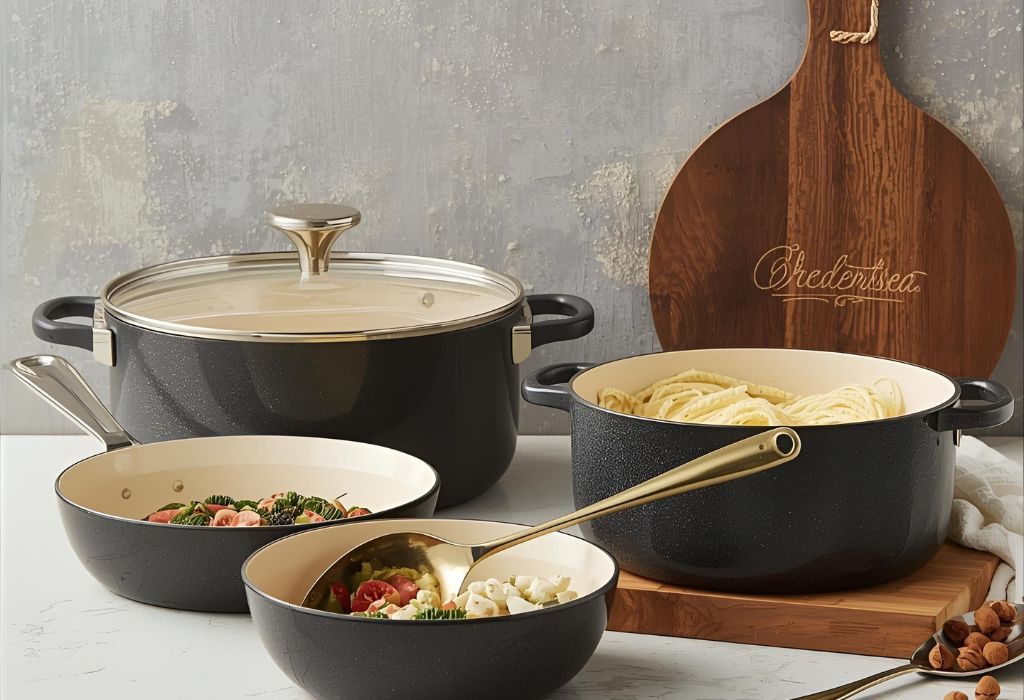
Proper care is essential for extending the life of ceramic coating cookware. While the surface is designed to resist sticking, it is still more delicate than stainless steel or cast iron.
High heat is one of the biggest threats to the coating. Cooking on medium or low settings helps preserve the smooth surface and prevents damage.
Metal utensils are another risk. Choosing silicone, wood, or nylon tools prevents scratches and keeps the coating intact.
Cleaning should be done by hand using mild soap and a soft sponge. Harsh scrubbers or dishwasher cycles can shorten the lifespan of the nonstick layer.
Storing cookware carefully also makes a difference. Using pan protectors or placing a cloth between stacked pieces helps avoid chips and scratches.
What utensils should be used?
Wood, silicone, or nylon utensils are recommended to prevent scratches.
Is ceramic coating cookware dishwasher safe?
Hand washing is best, as dishwasher detergents can damage the surface.
How should stuck-on food be cleaned?
Soak the pan in warm water and use a soft sponge or baking soda paste.
When should cookware be replaced?
Once the coating peels, chips, or loses its nonstick properties, it is time to replace it.
What is the best way to store ceramic pans?
Store them separately or with pan protectors to avoid contact damage.
Ceramic Coating vs Other Cookware Options
Choosing the right cookware often means comparing ceramic coating to other popular materials. Each option has strengths and trade-offs that influence cooking performance and safety.
Ceramic coating cookware stands out for its toxin-free promise and nonstick convenience. However, it usually has a shorter lifespan than PTFE, stainless steel, or cast iron.
Compared to pure ceramic cookware, coated pans are lighter and heat up faster. Pure ceramic, however, is more durable and naturally nonreactive.
Against cast iron, ceramic-coated pans are easier to clean and maintain. Cast iron excels in heat retention but requires seasoning and extra care.
Enamel cookware offers similar aesthetics and non-reactivity, but it can chip easily. Ceramic coating remains more accessible for everyday cooking.
Ceramic-coated vs PTFE nonstick?
Ceramic is PFAS-free and safer at higher heat, while PTFE lasts longer with proper care.
Ceramic-coated vs 100% ceramic cookware?
Pure ceramic is more durable and chemical-free, but heavier and slower to heat.
Ceramic-coated vs cast iron?
Ceramic is lightweight and easy to use, while cast iron provides superior heat retention.
Ceramic-coated vs enamel cookware?
Both resist reactions, but enamel can chip. Ceramic coatings are lighter and simpler to handle.
Which option works best on induction stoves?
Ceramic-coated cookware with a stainless base often works, while pure aluminum does not.
Trends and Future of Ceramic-Coated Cookware
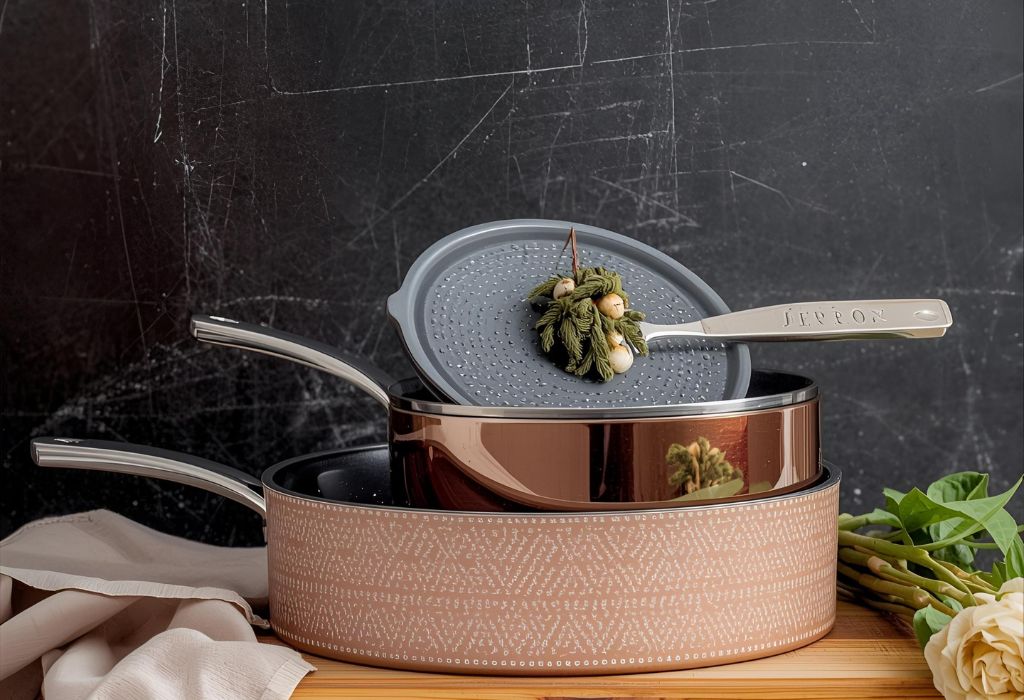
Ceramic coating cookware has moved from a niche product to a mainstream kitchen choice. Rising health concerns and a push for sustainable alternatives have fueled its growth.
Consumers are increasingly aware of PFAS and PTFE risks. As a result, ceramic coatings are marketed as eco-friendly, safer, and aligned with the demand for non-toxic kitchens.
Manufacturers are responding with innovation. Diamond-infused ceramics, reinforced Sol-gel layers, and multi-coat systems are designed to improve durability and performance.
Regulations also play a role in shaping the future. Restrictions on PFAS chemicals encourage brands to expand their ceramic product lines.
Market growth is strong and projected to continue. The cookware industry exceeded $32.75 billion in 2024 and ceramic options are gaining share (source).
Is ceramic-coated cookware growing in popularity?
Yes, it is one of the fastest-growing categories in the cookware market.
Are brands improving ceramic coatings?
Yes, new blends with diamond or titanium aim to increase strength and nonstick life.
Do government regulations influence the trend?
Yes, PFAS restrictions push manufacturers toward safer ceramic options.
Is ceramic considered sustainable?
It is viewed as more eco-friendly since it avoids toxic fluoropolymers.
What innovations are expected next?
Stronger coatings, higher heat resistance, and certified toxin-free cookware will dominate.
Conclusion
Ceramic coating cookware has earned its place in modern kitchens by combining nonstick ease with a safer, eco-friendly reputation. It offers quick cleanup, smooth cooking, and a chemical-free surface that appeals to health-conscious households.
While durability can be a challenge, proper care helps extend the life of these pans. Understanding their strengths and limitations allows buyers to make smart, lasting choices.
As innovation continues, ceramic-coated cookware is expected to become even more resilient and versatile. With increasing demand for PFAS-free products, it is positioned as a strong alternative to traditional nonstick.
For anyone seeking balance between convenience, safety, and sustainability, ceramic coating cookware remains a worthy option. Choosing the right set and maintaining it properly ensures reliable performance and peace of mind in the kitchen.
I’m Emma J. Caldwell, the founder, lead writer, and home-cooking enthusiast behind KitchenGuideCo.com. With a background in culinary arts and over a decade of cooking experience in both professional and personal kitchens, I created this platform to demystify recipes, offer smart kitchen gadget reviews, and guide readers through meal prep with confidence and clarity.

